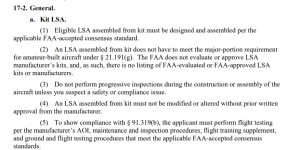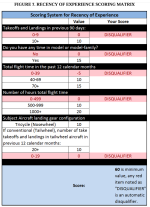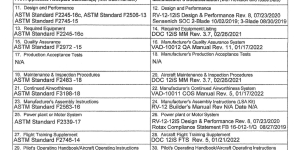Regardless of whether any regulation encourages or prohibits accomplishing the 5 hour insurance flight training concurrently with doing the 5 hour E-LSA fly-off it is just a bad idea. Is someone really getting the transition training they need when they are busy setting up AOA parameters and autopilot settings, feeling for a heavy wing, etc.? These wonderful examples of an airplane burn 4 gallons an hour of mogas so flying an "extra" 5 hours is what......less than $100 of fuel wherever you may be located......
I appreciate all you said. Let me assure you. The experienced and current pilot is getting inital operating experience and doing Phase 1. The pilot is flying well after 1.4 hr, 2 flights, 2 landings, slow flight, stall and recovery. Flight check items are being checked off just by flying.
As far as AOA cal, with the APP (additional pilot program), it will be safer than doing it solo. He will finish 5 hrs with me and fly solo 5 hrs before flying a PAX. During that 5 hr solo he is free to gain experience and do more testing and calibrations. This 5 and 5 was a limitation that was imposed, but not by me.
As EAA Tech Conselor before I flew with pilot we spent two hours. I picked up a handful of minor issues that were addressed. Gave 1 hr of logged ground instruction going over the plane, preflight, limitations and paperwork before first flight.
1st flight was by plan short, 0.6hrs. If there was any issue we would have landed immediately. I was able to record data, verification engine and aircraft performance, checked off a lot of items (after flight). Yes I was busy monitoring and recording. Plane performance was exactly the values Vans Aircraft. Flight resulted in 3 minor write ups. I was able to share workload with pilot, CRM, to allow pilot to focus on flying, while I did radio and looked for traffic. Like we do in airlines. This is all good. I gave pilot some tips, called out altitude, heading, airspeed and suggest pitch and power (i.e., instruction). Very organized, routine.
The 1st flight pick-ups were corrected (cowl to exhaust clearance, flaperon to SOB clearance very nicely. Slight, minor left heavy wing (very slight) is not being corrected until flown more, per Van's instructions. Other than that the airplane is well sorted out in prep for flight 2, and the pilot is getting use to plane nicely. NOTE you mention heavy wing as a reason not be get instruction during Phase 1 makes no sense to me. Again they are a full fledged pilot. They are not learning to fly. This "instruction" is not for a rating. If the wing is too heavy we knock it off and land. That was not thee case.
2nd flight 0.8 hours shortened a bit due to weather (isolated CB's) approaching. Autopilot use, stall and stall recovery, 2 landings. Pilot did radio and I gave less tips. It was windy with 8kt cross wind. Taxi with free castering nose wheel is new to him. He is getting the hang of it nicely, but we are focused on this in all phases, taxi, t/o and landing, especially in cross winds. Cross winds is my pet topic and pet peeve. Many pilots are not proficient, and may have never learned proper cross wind takeoff and landing. I am a stickier on this topic.
Continuing with longer flights. I anticipate pilot and plane completing goals, pilot proficient / comfortable, checks and as required adjustments done. However you are never really done adjusting and testing. If we need more time we will take it. No rush. It's going well. This RV-12iS LSA is a good well proven design, built to uniform standards, has been surprise free.
RV-12 has an excellent accident history, and phase 1 and early flights mostly go safely. However there are many that happen in first 8 to 10 hours of aircraft operations, even 1st flight. Even though total fatal accident stats are above average for RV-12, early accidents represents a significant percentage of RV-12 accidents. Always be focused. We are not complacent. Getting training and APP with an experienced safety minded pilot adds safety margins, makes Phase 1 more efficient. This will reduce all accidents especially early accidents. Doing Phase 1 in itself is good training, but getting another set of experienced eyes to observe, guide, critique and instruct is better than trial and error. Thank you everyone for your replies.
PS Also use EAA Tech Counselor Program. An experienced builder, will inspect your work and may have pearls of wisdom and suggestions.




